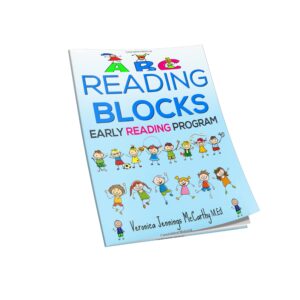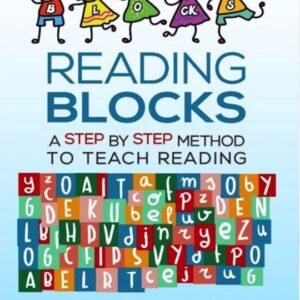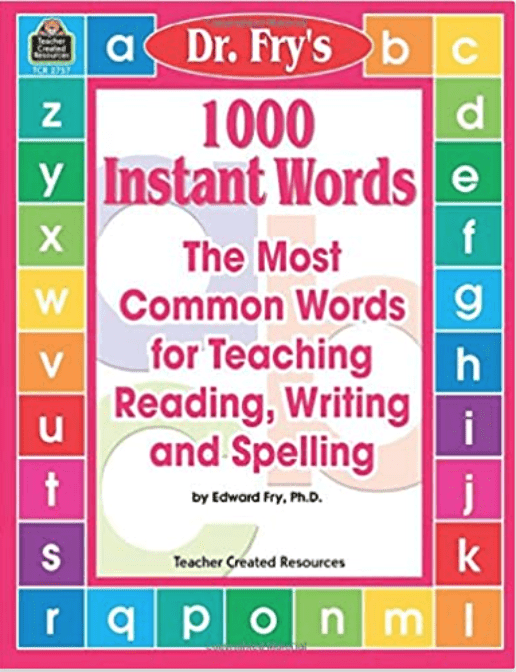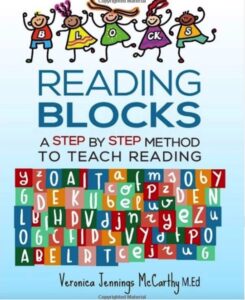Most people ask, “What exactly is the Fry 100 sight word list for kindergarten and why do we need it?” That’s a great question!
First, sight words are words that we see over and over in everything that we read. These words often do not sound out with phonics rules and it benefits the reader to just memorize them. Second, the Fry 100 sight word list is the list of 100 sight words that are used the most frequently out of all words. These 100 sight words are generally memorized by the end of kindergarten.
Why We Bother to Learn the Fry 100 Sight Word List
We read to learn. If we are having trouble sounding out some words, or reading too slow because we don’t know the words, our comprehension suffers and we don’t learn as much as we could have learned. Sight words help a reader to be a more fluent reader which means they can read faster and remember what they read better.
Good readers learn these sight words rapidly and then become excellent readers. Struggling readers usually have difficulty reading these sight words and this slows down their reading progress and also hurts their comprehension skills. Research has shown that good readers just get better and better and poor readers start to avoid reading and get further and further behind. The best time to notice this struggle is in kindergarten. By the beginning of the second half of kindergarten, a teacher can tell who is having trouble with learning to read. This is the best time to begin teaching the struggling reader by using a different method of instruction. By the end of kindergarten the reader should be able to read the complete list of Fry 100 sight words.
Words in the Fry 100 Sight Word List
These are the 100 sight words in the Fry 100 sight word list:
the, of, and, a, to, in, is, you, that, it, he, was, for, on, are, as, with, his, they, I, at, be, this, have, from, or, one, had, by, word, but, not, what, all, were, we, when, your, can, said, there, use, an, each, which, she, do, how, their, if, will, up, other, about, out, many, then, them, these, so, some, her, would, make, like, him, into, time, has, look, two, more, write, go, see, number, no, way, could, people, my, than, first, water, been, call, who, oil, now, find, long, down, day, did, get, come, made, may, part, over.
A great way to learn these words in a passive learning manner is to put each word on a colored index card. (We use colored cards because the colors activate different areas of the brain which gives the reader another way to file and retrieve the word in his/her brain.) Put each card up on the wall in a classroom or in a bedroom or kitchen in the home. The child will see these words repeatedly throughout the day and will start to recognize them. This gives the reader the option to read them while standing in line or laying down to go to bed. Thirty second games can also be done in these in between times For example, “who can tell me the sight word I am thinking of that begins with the sound /b/?” Then everyone quickly looks over and reads all the words looking for the one that begins with the /b/ sound. Next, are three more games you can play with using the words from the Fry 100 sight word list.
More Games to Practice Learning the Fry 100 Sight Word List
Sight words are learned by seeing them, writing, them and reading them. This does not have to be dull and boring. Learning sight words can be fun if you use a game format. Here are three games for learning and practicing the Fry 100 sight word list. You can make these games yourself or purchase one here.
- This game can be played in small groups of 1-4 students and 1 leader. Make a deck of colored index cards with one sight word on each card. Use only the words from the Fry 100 sight word list that you have already introduced and practiced. The students can play in teams of two if they are struggling to learn the words, or individually if they are more confident. Putting the students in pairs takes some stress off the struggling reader. The game begins by each team practicing reading their sight word cards together for five minutes. Then they all come together and the leader holds up the first card. They have three seconds to read it. The first team to read the word correctly gets to keep the card. If neither team reads the word correctly, the leader gets to keep the card. The winner is the team with the most cards at the end of the game. Any words not read by either team can all be read aloud together at the end of the game. The winning team should be able to pick some sort of prize out of a prize trunk. Prizes make everyone more engaged.
- This game can be played individually or in pairs. Write each word from the Fry 100 sight word list on two different colored index cards. Each word should be written on two cards so that you can match up pairs of the same word. The players can take turns holding up each card, reading it aloud, and then placing it upside down on the table or floor so you can only see the blank back side of the card. When all the cards are placed blank side up, the players roll a die to see who goes first. The higher number goes first. The first player or team chooses two cards and tries to make a matched pair. If the cards do not match, they go back where they were and upside down. If the cards do match, then the player or team gets to keep those cards and pick two more. The winner of the game is the player or team with the most cards. Individual students can also play this game on their own to practice reading the cards. The winner or winners can pick a prize from the prize chest.
- A Bingo game can be played with the Fry 100 sight word list as the words on the Bingo card. Draw 25 boxes on each piece of colored card stock. You can use a smaller number such as 16 or 9 boxes with younger children or struggling readers. Write one of the words from the 100 Fry sight words list in each box. Choose the words in a random order so that each card will have a different combination of sight words. Let each player choose their own card and chips to cover the word as it is called. The players can take a couple of minutes before the game starts to read over their card and ask for help with any word they do not know. They can practice reading their card aloud alone or with a partner. Then the leader chooses a card from the list and reads the word out loud. The players can put a chip on the word if they have it. The winner is the first person who has a straight line of the words across, down, or diagonally. The winner can choose a prize out of the prize chest.
You can buy a sight word game here.
Assessments For Fry 100 Sight Word List
Informal assessments are a great way to check on the progress of learning the words in the Fry 100 sight words list. Here are two ways to check on a reader’s progress:
- Write the words in twenty sets of five words starting with number one and going in order to 100. Have the reader read each word going down the list. If the reader misses a word, note it and ask him/her to continue to the next word. If three words are missed in a row, stop the assessment and go back to the last correctly read word. This will give you a general idea of the reader’s level of reading skill. Any missed words can be put on index cards to practice. The above games can also be played for more practice in learning the words.
- A second way to assess a reader’s skill level with the Fry 100 sight word list is by giving the reader a paper with the words written is sets of five words. Choose one word from each set and say it out loud. The student should be asked to circle the word that you say out loud. If the correct word is circled in each set, the reader most likely knows the words. This is just an easy assessment to do quickly with a large group to get a general idea of who needs a closer look.
Conclusion
Well I hope that this article answers your question of what is the Fry 100 sight word list. Now you know what the words are and why they are so important to learn. You also know a couple of ways to assess a person’s knowledge of the sight words as well as several ways to practice the words and learn them in a fun way instead of boring repetition. The time you take to help kids learn these words is time well spent. This is one very important tool in your arsenal of tools to use to help kids become fluent life long readers.
-
 Sale Product on saleEarly Reading Program Ebook
Sale Product on saleEarly Reading Program Ebook$29.99Original price was: $29.99.$24.99Current price is: $24.99. -
 Sale Product on saleReading Blocks: A Step By Step Method to Teach Reading Ebook
Sale Product on saleReading Blocks: A Step By Step Method to Teach Reading Ebook$99.99Original price was: $99.99.$49.99Current price is: $49.99. -
 Sale Product on saleReading Blocks: A Step By Step Method to Teach Reading Program
Sale Product on saleReading Blocks: A Step By Step Method to Teach Reading Program$99.99Original price was: $99.99.$49.99Current price is: $49.99.



